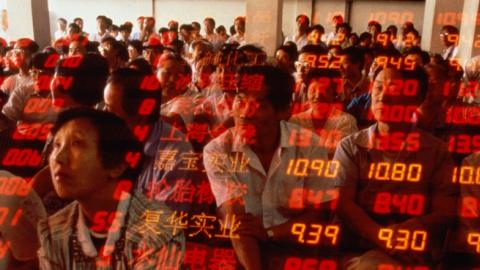Political and economic freedom is everywhere and always fragile. The just finished elections have informed us that this truism applies also to the US. The revelations of crony capitalism and corruption at the highest levels alongside the thunder of demagoguery understandably spread anxiety amongst believers in classical liberalism.
Yet attempts of some scholar commentators to argue that the cracks in US democracy and constitutionalism resembled the run-up to the collapse of the Weimar Republic understandably did not resonate. The failure of Germany’s model constitution of democracy created after the defeat of World War 1 had much to do with the terrible extent of the economic crisis to afflict that country. There is no parallel to that in the present situation of the US albeit that the radical monetary and regulation agenda of the Obama Administration has left deep scars. In particular the late dangerous stage of the asset price inflation disease originating in the Bernanke-Yellen Fed is yet to emerge and may prove unavoidable.
Yet there is a present potential scary parallel to the Weimar Republic’s collapse– and that line runs through the People’s Republic of China. And just as for Germany in the late 1920s the Federal Reserve is largely to blame. The Trump Administration may yet prevent the ghost of Weimar returning, but only if it formulates its China strategy in terms of a pro-freedom agenda.
The radical monetary experiment conducted by the1920s Fed which played such a fateful role with respect to the Weimar Republic included “price stabilization”, fine tuning the business cycle, and “pound stabilization”. The Fed would never have recognized itself as following an experiment but that was the actual situation given that the international gold standard had blown apart at the start of World War 1. Prices were tending to fall due to record productivity growth. The Fed responded by keeping interest rates very low. And then in 1927 the Fed aggressively eased monetary conditions despite an already frothy equity market so as to help the Bank of England defend the pound.
The result of the Fed’s monetary manipulations was virulent asset price inflation –both in the US (equities and real estate) and abroad, where the focal centre was Germany which had joined the dollar area in 1924 in the aftermath of the hyperinflation. The half-decade 1924-8 was a miracle period for the German economy which became the 2nd largest in the world (after the US). German borrowers scrambled to take advantage of cheaper loan terms on foreign than domestic loans. And the principle supplier of funds would be described as the carry traders (moving out of dollars into marks and out of safe credits into riskier German credits). The implosion of the carry trade precipitated by Fed tightening through 1928-9 and also by speculative excess in the German economy tipped the Weimar Republic into the economic and political abyss.
Fast forward to the People’s Republic of China during the Great Monetary Experiment pioneered by the Obama Administration. The giant carry trade has been into China, now the 2nd largest economy in the world. True, China has not even had the semblance of a model liberal democracy in the vein of Weimar. Yet the possible elements of a transition to new economic and political freedoms have coexisted within and alongside the communist dictatorship. A financial and economic collapse has the potential to destroy these elements as the communist regime intensifies repression.
The dictators in Beijing are evidently concerned about the potential crash and recession ahead - hence their efforts this year to take advantage of the two” Yellen puts” (January and July walking back from promised monetary normalization) to fuel a further wave of money and credit growth. Doubtless they hope that the giant bubbles in real estate, commodities and credit can be sustained until after the Party Congress next year. Earlier steps by the Trump Administration to normalize monetary conditions in the US could jeopardize that objective, as could a multitude of idiosyncratic factors.
Financial and economic crisis could accelerate China’s journey into bleak totalitarianism and military aggression like Germany’s 90 years ago. But the Trump Administration could seek to prevent this. Rather than joining with the IMF and the crony capitalists in the West in encouraging Beijing to impose new exchange restrictions which would artificially prop up the yuan it could insist on an opposite course. The conditions of any multilateral financial support package in response to a Chinese crisis should include economic and political liberalization. This would feature a free market in the currency (meaning a complete abolition of exchange restrictions) – alongside sound monetary reforms. In consequence the grip of the communist party on the economy and political system would loosen. A US-led trade policy to counter unfair practices tolerated by Beijing – whether theft of technology, counterfeit, or dumping – would be entirely consistent with a totally new approach by Washington.

















